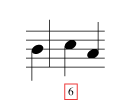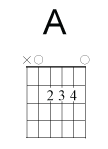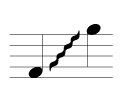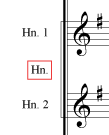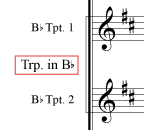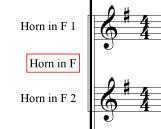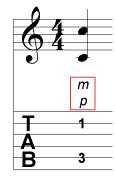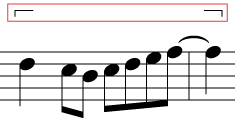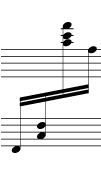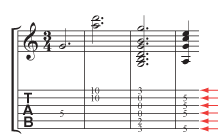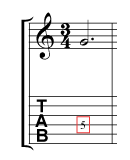�������������������������������������������������������������������������������������������������������������������������������������������������������������������������������������������������������������������������������������������������������������������������������������������������������������������������������������������������������������������������������������������������������������������������������������������������������������������������������������������������������������������������������������������������������������������������������������������������������������������������������������������������������������������������������������������������������������������������������������������������������������������������������������������������������������������������������������������������������������������������������������������������������������������������������������������������������������������������������������������������������������������������������������������������������������������������������������������������������������������������������������������������������������������������������������������������������������������������������������������������������������������������������������������������������������������������������������������������������������������������������������������������������������������������������������������������������������������������������������������������������������������������������������������������������������������������������������������������������������������������������������������������������������������������������������������������������������������������������������������������������������������������������������������������������������������������������������������������������������������������������������������������������������������������������������������������������������������������������������������������������������������������������������������������������������������������������������������������������������������������������������������������������������������������������������������������������������������������������������������������������������������������������������������������������������������������������������������������������������������������������������������������������������������������������������������������������������������������������������������������������������������������������������������������������������������������������������������������������������������������������������������������������������������������������������������������������������������������������������������������������������������������������������������������������������������������������������������������������������������������������������������������������������������������������������������������������������������������������������������������������������������������������������������������������������������������������������������������������������������������������������������������������������������������������������������������������������������������������������������������������������������������������������������������������������������������������������������������������������������������������������������������������������������������������������������������������������������������������������������������������������������������������������������������������������������������������������������������������������������������������������������������������������������������������������������������������������������������������������������������������������������������������������������������������������������������������������������������������������������������������������������������������������������������������������������������������������������������������������������������������������������������������������������������������������������������������������������������������������������������������������������������������������������������������������������������������������������������������������������������������������������������������������������������������������������������������������������������������������������������������������������������������������������������������������������������������������������������������������������������������������������������������������������������������������������������������������������������������������������������������������������������������������������������������������������������������������������������������������������������������������������������������������������������������������������������������������������������������������������������������������������������������������������������������������������������������������������������������������������������������������������������������������������������������������������������������������������������������������������������������������������������������������������������������������������������������������������������������������������������������������������������������������������������������������������������������������������������������������������������������������������������������������������������������������������������������������������������������������������������������������������������������������������������������������������������������������������������������������������������������������������������������������������������������������������������������������������������������������������������������������������������������������������������������������������������������������������������������������������������������������������������������������������������������������������������������������������������������������������������������������������������������������������������������������������������������������������������������������������������������������������������������������������������������������������������������������������������������������������������������������������������������������������������������������������������������������������������������������������������������������������������������������������������������������������������������������������������������������������������������������������������������������������������������������������������������������������������������������������������������������������������������������������������������������������������������������������������������������������������������������������������������������������������������������������������������������������������������������������������������������������������������������������������������������������������������������������������������������������������������������������������������������������������������������������������������������������������������������������������������������������������������������������������������������������������������������������������������������������������������������������������������������������������������������������������������������������������������������������������������������������������������������������������������������������������������������������������������������������������������������������������������������������������������������������������������������������������������������������������������������������������������������������������������������������������������������������������������������������������������������������������������������������������������������������������������������������������������������������������������������������������������������������������������������������������������������������������������������������������������������������������������������������������������������������������������������������������������������������������������������������������������������������������������������������������������������������������������������������������������������������������������������������������������������������������������������������������������������������������������������������������������������������������������������������������������������������������������������������������������������������������������������������������������������������������������������������������������������������������������������������������������������������������������������������������������������������������������������������������������������������������������������������������������������������������������������������������������������������������������������������������������������������������������������������������������������������������������������������������������������������������������������������������������������������������������������������������������������������������������������������������������������������������������������������������������������������������������������������������������������������������������������������������������������������������������������������������������������������������������������������������������������������������������������������������������������������������������������������������������������������������������������������������������������������������������������������������������������������������������������������������������������������������������������������������������������������������������������������������������������������������������������������������������������������������������������������������������������������������������������������������������������������������������������������������������������������������������������������������������������������������������������������������������������������������������������������������������������������������������������������������������������������������������������������������������������������������������������������������������������������������������������������������������������������������������������������������������������������������������������������������������������������������������������������������������������������������������������������������������������������������������������������������������������������������������������������������������������������������������������������������������������������������������������������������������������������������������������������������������������������������������������������������������������������������������������������������������������������������������������������������������������������������������������������������������������������������������������������������������������������������������������������������������������������������������������������������������������������������������������������������������������������������������������������������������������������������������������������������������������������������������������������������������������������������������������������������������������������������������������������������������������������������������������������������������������������������������������������������������������������������������������������������������������������������������������������������������������������������������������������������������������������������������������������������������������������������������������������������������������������������������������������������������������������������������������������������������������������������������������������������������������������������������������������������������������������������������������������������������������������������������������������������������������������������������������������������������������������������������������������������������������������������������������������������������������������������������������������������������������������������������������������������������������������������������������������������������������������������������������������������������������������������������������������������������������������������������������������������������������������������������������������������������������������������������������������������������������������������������������������������������������������������������������������������������������������������������������������������������������������������������������������������������������������������������������������������������������������������������������������������������������������������������������������������������������������������������������������������������������������������������������������������������������������������������������������������������������������������������������������������������������������������������������������������������������������������������������������������������������������������������������������������������������������������������������������������������������������������������������������������������������������������������������������������������������������������������������������������������������������������������������������������������������������������������������������������������������������������������������������������������������������������������������������������������������������������������������������������������������������������������������������������������������������������������������������������������������������������������������������������������������������������������������������������������������������������������������������������������������������������������������������������������������������������������������������������������������������������������������������������������������������������������������������������������������������������������������������������������������������������������������������������������������������������������������������������������������������������������������������������������������������������������������������������������������������������������������������������������������������������������������������������������������������������������������������������������������������������������������������������������������������������������������������������������������������������������������������������������������������������������������������������������������������������������������������������������������������������������������������������������������������������������������������������������������������������������������������������������������������������������������������������������������������������������������������������������������������������������������������������������������������������������������������������������������������������������������������������������������������������������������������������������������������������������������������������������������������������������������������������������������������������������������������������������������������������������������������������������������������������������������������������������������������������������������������������������������������������������������������������������������������������������������������������������������������������������������������������������������������������������������������������������������������������������������������������������������������������������������������������������������������������������������������������������������������������������������������������������������������������������������������������������������������������������������������������������������������������������������������������������������������������������������������������������������������������������������������������������������������������������������������������������������������������������������������������������������������������������������������������������������������������������������������������������������������������������������������������������������������������������������������������������������������������������������������������������������������������������������������������������������������������������������������������������������������������������������������������������������������������������������������������������������������������������������������������������������������������������������������������������������������������������������������������������������������������������������������������������������������������������������������������������������������������������������������������������������������������������������������������������������������������������������������������������������������������������������������������������������������������������������������������������������������������������������������������������������������������������������������������������������������������������������������������������������������������������������������������������������������������������������������������������������������������������������������������������������������������������������������������������������������������������������������������������������������������������������������������������������������������������������������������������������������������������������������������������������������������������������������������������������������������������������������������������������������������������������������������������������������������������������������������������������������������������������������������������������������������������������������������������������������������������������������������������������������������������������������������������������������������������������������������������������������������������������������������������������������������������������������������������������������������������������������������������������������������������������������������������������������������������������������������������������������������������������������������������������������������������������������������������������������������������������������������������������������������������������������������������������������������������������������������������������������������������������������������������������������������������������������������������������������������������������������������������������������������������������������������������������������������������������������������������������������������������������������������������������������������������������������������������������������������������������������������������������������������������������������������������������������������������������������������������������������������������������������������������������������������������������������������������������������������������������������������������������������������������������������������������������������������������������������������������������������������������������������������������������������������������������������������������������������������������������������������������������������������������������������������������������������������������������������������������������������������������������������������������������������������������������������������������������������������������������������������������������������������������������������������������������������������������������������������������������������������������������������������������������������������������������������������������������������������������������������������������������������������������������������������������������������������������������������������������������������������������������������������������������������������������������������������������������������������������������������������������������������������������������������������������������������������������������������������������������������������������������������������������������������������������������������������������������������������������������������������������������������������������������������������������������������������������������������������������������������������������������������������������������������������������������������������������������������������������������������������������������������������������������������������������������������������������������������������������������������������������������������������������������������������������������������������������������������������������������������������������������������������������������������������������������������������������������������������������������������������������������������������������������������������������������������������������������������������������������������������������������������������������������������������������������������������������������������������������������������������������������������������������������������������������������������������������������������������������������������������������������������������������������������������������������������������������������������������������������������������������������������������������������������������������������������������������������������������������������������������������������������������������������������������������������������������������������������������������������������������������������������������������������������������������������������������������������������������������������������������������������������������������������������������������������������������������������������������������������������������������������������������������������������������������������������������������������������������������������������������������������������������������������������������������������������������������������������������������������������������������������������������������������������������������������������������������������������������������������������������������������������������������������������������������������������������������������������������������������������������������������������������������������������������������������������������������������������������������������������������������������������������������������������������������������������������������������������������������������������������������������������������������������������������������������������������������������������������������������������������������������������������������������������������������������������������������������������������������������������������������������������������������������������������������������������������������������������������������������������������������������������������������������������������������������������������������������������������������������������������������������������������������������������������������������������������������������������������������������������������������������������������������������������������������������������������������������������������������������������������������������������������������������������������������������������������������������������������������������������������������������������������������������������������������������������������������������������������������������������������������������������������������������������������������������������������������������������������������������������������������������������������������������������������������������������������������������������������������������������������������������������������������������������������������������������������������������������������������������������������������������������������������������������������������������������������������������������������������������������������������������������������������������������������������������������������������������������������������������������������������������������������������������������������������������������������������������������������������������������������������������������������������������������������������������������������������������������������������������������������������������������������������������������������������������������������������������������������������������������������������������������������������������������������������������������������������������������������������������������������������������������������������������������������������������������������������������������������������������������������������������������������������������������������������������������������������������������������������������������������������������������������������������������������������������������������������������������������������������������������������������������������������������������������������������������������������������������������������������������������������������������������������������������������������������������������������������������������������������������������������������������������������������������������������������������������������������������������������������������������������������������������������������������������������������������������������������������������������������������������������������������������������������������������������������������������������������������������������������������������������������������������������������������������������������������������������������������������������������������������������������������������������������������������������������������������������������������������������������������������������������������������������������������������������������������������������������������������������������������������������������������������������������������������������������������������������������������������������������������������������������������������������������������������������������������������������������������������������������������������������������������������������������������������������������������������������������������������������������������������������������������������������������������������������������������������������������������������������������������������������������������������������������������������������������������������������������������������������������������������������������������������������������������������������������������������������������������������������������������������������������������������������������������������������������������������������������������������������������������������������������������������������������������������������������������������������������������������������������������������������������������������������������������������������������������������������������������������������������������������������������������������������������������������������������������������������������������������������������������������������������������������������������������������������������������������������������������������������������������������������������������������������������������������������������������������������������������������������������������������������������������������������������������������������������������������������������������������������������������������������������������������������������������������������������������������������������������������������������������������������������������������������������������������������������������������������������������������������������������������������������������������������������������������������������������������������������������������������������������������������������������������������������������������������������������������������������������������������������������������������������������������������������������������������������������������������������������������������������������������������������������������������������������������������������������������������������������������������������������������������������������������������������������������������������������������������������������������������������������������������������������������������������������������������������������������������������������������������������������������������������������������������������������������������������������������������������������������������������������������������������������������������������������������������������������������������������������������������������������������������������������������������������������������������������������������������������������������������������������������������������������������������������������������������������������������������������������������������������������������������������������������������������������������������������������������������������������������������������������������������������������������������������������������������������������������������������������������������������������������������������������������������������������������������������������������������������������������������������������������������������������������������������������������������������������������������������������������������������������������������������������������������������������������������������������������������������������������������������������������������������������������������������������������������������������������������������������������������������������������������������������������������������������������������������������������������������������������������������������������������������������������������������������������������������������������������������������������������������������������������������������������������������������������������������������������������������������������������������������������������������������������������������������������������������������������������������������������������������������������������������������������������������������������������������������������������������������������������������������������������������������������������������������������������������������������������������������������������������������������������������������������������������������������������������������������������������������������������������������������������������������������������������������������������������������������������������������������������������������������������������������������������������������������������������������������������������������������������������������������������������������������������������������������������������������������������������������������������������������������������������������������������������������������������������������������������������������������������������������������������������������������������������������������������������������������������������������������������������������������������������������������������������������������������������������������������������������������������������������������������������������������������������������������������������������������������������������������������������������������������������������������������������������������������������������������������������������������������������������������������������������������������������������������������������������������������������������������������������������������������������������������������������������������������������������������������������������������������������������������������������������������������������������������������������������������������������������������������������������������������������������������������������������������������������������������������������������������������������������������������������������������������������������������������������������������������������������������������������������������������������������������������������������������������������������������������������������������������������������������������������������������������������������������������������������������������������������������������������������������������������������������������������������������������������������������������������������������������������������������������������������������������������������������������������������������������������������������������������������������������������������������������������������������������������������������������������������������������������������������������������������������������������������������������������������������������������������������������������������������������������������������������������������������������������������������������������������������������������������������������������������������������������������������������������������������������������������������������������������������������������������������������������������������������������������������������������������������������������������������������������������������������������������������������������������������������������������������������������������������������������������������������������������������������������������������������������������������������������������������������������������������������������������������������������������������������������������������������������������������������������������������������������������������������������������������������������������������������������������������������������������������������������������������������������������������������������������������������������������������������������������������������������������������������������������������������������������������������������������������������������������������������������������������������������������������������������������������������������������������������������������������������������������������������������������������������������������������������������������������������������������������������������������������������������������������������������������������������������������������������������������������������������������������������������������������������������������������������������������������������������������������������������������������������������������������������������������������������������������������������������������������������������������������������������������������������������������������������������������������������������������������������������������������������������������������������������������������������������������������������������������������������������������������������������������������������������������������������������������������������������������������������������������������������������������������������������������������������������������������������������������������������������������������������������������������������������������������������������������������������������������������������������������������������������������������������������������������������������������������������������������������������������������������������������������������������������������������������������������������������������������������������������������������������������������������������������������������������������������������������������������������������������������������������������������������������������������������������������������������������������������������������������������������������������������������������������������������������������������������������������������������������������������������������������������������������������������������������������������������������������������������������������������������������������������������������������������������������������������������������������������������������������������������������������������������������������������������������������������������������������������������������������������������������������������������������������������������������������������������������������������������������������������������������������������������������������������������������������������������������������������������������������������������������������������������������������������������������������������������������������������������������������������������������������������������������������������������������������������������������������������������������������������������������������������������������������������������������������������������������������������������������������������������������������������������������������������������������������������������������������������������������������������������������������������������������������������������������������������������������������������������������������������������������������������������������������������������������������������������������������������������������������������������������������������������������������������������������������������������������������������������������������������������������������������������������������������������������������������������������������������������������������������������������������������������������������������������������������������������������������������������������������������������������������������������������������������������������������������������������������������������������������������������������������������������������������������������������������������������������������������������������������������������������������������������������������������������������������������������������������������������������������������������������������������������������������������������������������������������������������������������������������������������������������������������������������������������������������������������������������������������������������������������������������������������������������������������������������������������������������������������������������������������������������������������������������������������������������������������������������������������������������������������������������������������������������������������������������������������������������������������������������������������������������������������������������������������������������������������������������������������������������������������������������������������������������������������������������������������������������������������������������������������������������������������������������������������������������������������������������������������������������������������������������������������������������������������������������������������������������������������������������������������������������������������������������������������������������������������������������������������������������������������������������������������������������������������������������������������������������������������������������������������������������������������������������������������������������������������������������������������������������������������������������������������������������������������������������������������������������������������������������������������������������������������������������������������������������������������������������������������������������������������������������������������������������������������������������������������������������������������������������������������������������������������������������������������������������������������������������������������������������������������������������������������������������������������������������������������������������������������������������������������������������������������������������������������������������������������������������������������������������������������������������������������������������������������������������������������������������������������������������������������������������������������������������������������������������������������������������������������������������������������������������������������������������������������������������������������������������������������������������������������������������������������������������������������������������������������������������������������������������������������������������������������������������������������������������������������������������������������������������������������������������������������������������������������������������������������������������������������������������������������������������������������������������������������������������������������������������������������������������������������������������������������������������������������������������������������������������������������������������������������������������������������������������������������������������������������������������������������������������������������������������������������������������������������������������������������������������������������������������������������������������������������������������������������������������������������������������������������������������������������������������������������������������������������������������������������������������������������������������������������������������������������������������������������������������������������������������������������������������������������������������������������������������������������������������������������������������������������������������������������������������������������������������������������������������������������������������������������������������������������������������������������������������������������������������������������������������������������������������������������������������������������������������������������������������������������������������������������������������������������������������������������������������������������������������������������������������������������������������������������������������������������������������������������������������������������������������������������������������������������������������������������������������������������������������������������������������������������������������������������������������������������������������������������������������������������������������������������������������������������������������������������������������������������������������������������������������������������������������������������������������������������������������������������������������������������������������������������������������������������������������������������������������������������������������������������������������������������������������������������������������������������������������������������������������������������������������������������������������������������������������������������������������������������������������������������������������������������������������������������������������������������������������������������������������������������������������������������������������������������������������������������������������������������������������������������������������������������������������������������������������������������������������������������������������������������������������������������������������������������������������
The circular-arrow type represents the direction in which a circular arrow points, using Unicode arrow terminology.
| clef |
Clefs are represented by a combination of sign, line, and clef-octave-change elements.
|
| clef-octave-change |
The clef-octave-change element is used for transposing clefs. A treble clef for tenors would have a value of -1.
|
| coda |
The coda element is the visual indicator of a coda sign. A sound element is needed to guide playback applications reliably.
|
| coda |
The coda element is the visual indicator of a coda sign. A sound element is needed to guide playback applications reliably.
|
| creator |
The creator element is borrowed from Dublin Core. It is used for the creators of the score. The type attribute is used to distinguish different creative contributions. Thus, there can be multiple creators within an identification. Standard type values are composer, lyricist, and arranger. Other type values may be used for different types of creative roles. The type attribute should usually be used even if there is just a single creator element. The MusicXML format does not use the creator / contributor distinction from Dublin Core.
|
| credit |
The credit type represents the appearance of the title, composer, arranger, lyricist, copyright, dedication, and other text and graphics that commonly appears on the first page of a score. The credit-words and credit-image elements are similar to the words and image elements for directions. However, since the credit is not part of a measure, the default-x and default-y attributes adjust the origin relative to the bottom left-hand corner of the first page. The enclosure for credit-words is none by default.
|
| credit-image |
The credit-image element is similar to the image elements for directions. However, since the credit is not part of a measure, the default-x and default-y attributes adjust the origin relative to the bottom left-hand corner of the first page. The enclosure for credit-words is none by default.
|
| credit-type |
The credit-type element indicates the purpose behind a credit. Multiple types of data may be combined in a single credit, so multiple elements may be used. Standard values include page number, title, subtitle, composer, arranger, lyricist, and rights.
|
| credit-words |
The credit-words element is similar to the words element for directions. However, since the credit is not part of a measure, the default-x and default-y attributes adjust the origin relative to the bottom left-hand corner of the first page. The enclosure for credit-words is none by default.
By default, a series of credit-words elements within a single credit element follow one another in sequence visually. Non-positional formatting attributes are carried over from the previous element by default.
|
| cue |
The cue element indicates the presence of a cue note.
|
| damp |
The damp element specifies a harp damping mark.
|
| damp-all |
The damp-all element specifies a harp damping mark for all strings.
|
| dashes |
The dashes type represents dashes, used for instance with cresc. and dim. marks.
|
| defaults |
The defaults type specifies score-wide defaults for scaling, layout, and appearance.
|
| degree |
The degree type is used to add, alter, or subtract individual notes in the chord. The print-object attribute can be used to keep the degree from printing separately when it has already taken into account in the text attribute of the kind element. The degree-value and degree-type text attributes specify how the value and type of the degree should be displayed.
A harmony of kind "other" can be spelled explicitly by using a series of degree elements together with a root.
|
| degree-alter |
The degree-alter type represents the chromatic alteration for the current degree. If the degree-type value is alter or subtract, the degree-alter value is relative to the degree already in the chord based on its kind element. If the degree-type value is add, the degree-alter is relative to a dominant chord (major and perfect intervals except for a minor seventh). The plus-minus attribute is used to indicate if plus and minus symbols should be used instead of sharp and flat symbols to display the degree alteration; it is no by default.
|
| degree-type |
The degree-type type indicates if this degree is an addition, alteration, or subtraction relative to the kind of the current chord. The value of the degree-type element affects the interpretation of the value of the degree-alter element. The text attribute specifies how the type of the degree should be displayed in a score.
|
| degree-value |
The content of the degree-value type is a number indicating the degree of the chord (1 for the root, 3 for third, etc). The text attribute specifies how the type of the degree should be displayed in a score. The degree-value symbol attribute indicates that a symbol should be used in specifying the degree. If the symbol attribute is present, the value of the text attribute follows the symbol.
|
| delayed-inverted-turn |
The delayed-inverted-turn element indicates an inverted turn that is delayed until the end of the current note.
|
| delayed-turn |
The delayed-turn element indicates a normal turn that is delayed until the end of the current note.
|
| detached-legato |
The detached-legato element indicates the combination of a tenuto line and staccato dot symbol.
|
| diatonic |
The diatonic element specifies the number of pitch steps needed to go from written to sounding pitch. This allows for correct spelling of enharmonic transpositions.
|
| direction |
A direction is a musical indication that is not attached to a specific note. Two or more may be combined to indicate starts and stops of wedges, dashes, etc.
By default, a series of direction-type elements and a series of child elements of a direction-type within a single direction element follow one another in sequence visually. For a series of direction-type children, non-positional formatting attributes are carried over from the previous element by default.
|
| direction-type |
Textual direction types may have more than 1 component due to multiple fonts. The dynamics element may also be used in the notations element. Attribute groups related to print suggestions apply to the individual direction-type, not to the overall direction.
|
| directive |
Directives are like directions, but can be grouped together with attributes for convenience. This is typically used for tempo markings at the beginning of a piece of music. This element has been deprecated in Version 2.0 in favor of the directive attribute for direction elements. Language names come from ISO 639, with optional country subcodes from ISO 3166.
|
| display-octave |
The display-step-octave group contains the sequence of elements used by both the rest and unpitched elements. This group is used to place rests and unpitched elements on the staff without implying that these elements have pitch. Positioning follows the current clef. If percussion clef is used, the display-step and display-octave elements are interpreted as if in treble clef, with a G in octave 4 on line 2. If not present, the note is placed on the middle line of the staff, generally used for a one-line staff.
|
| display-step |
The display-step-octave group contains the sequence of elements used by both the rest and unpitched elements. This group is used to place rests and unpitched elements on the staff without implying that these elements have pitch. Positioning follows the current clef. If percussion clef is used, the display-step and display-octave elements are interpreted as if in treble clef, with a G in octave 4 on line 2. If not present, the note is placed on the middle line of the staff, generally used for a one-line staff.
|
| display-text |
The name-display type is used for exact formatting of multi-font text in part and group names to the left of the system. The print-object attribute can be used to determine what, if anything, is printed at the start of each system. Enclosure for the display-text element is none by default. Language for the display-text element is Italian ("it") by default.
|
| display-text |
The display-text and accidental-text elements allow display of fully formatted text and accidentals.
|
| distance |
The distance element represents standard distances between notation elements in tenths.
|
| divisions |
Musical notation duration is commonly represented as fractions. The divisions element indicates how many divisions per quarter note are used to indicate a note's duration. For example, if duration = 1 and divisions = 2, this is an eighth note duration. Duration and divisions are used directly for generating sound output, so they must be chosen to take tuplets into account. Using a divisions element lets us use just one number to represent a duration for each note in the score, while retaining the full power of a fractional representation. If maximum compatibility with Standard MIDI 1.0 files is important, do not have the divisions value exceed 16383.
|
| doit |
The doit element is an indeterminate slide attached to a single note. The doit element appears after the main note and goes above the main pitch.
|
| dot |
One dot element is used for each dot of prolongation (augmentation dot). The placement element is used to specify whether the dot should appear above or below the staff line. It is ignored for notes that appear on a staff space.
|
| double |
If the double element is present, it indicates that the music is doubled one octave down from what is currently written (as is the case for mixed cello / bass parts in orchestral literature).
|
| double-tongue |
The double-tongue element represents the double tongue symbol (two dots arranged horizontally).
|
| down-bow |
The down-bow element represents the symbol that is used both for down-bowing on bowed instruments, and down-stroke on plucked instruments.
|
| duration |
Duration is a positive number specified in division units. This is the intended duration vs. notated duration (for instance, swing eighths vs. even eighths, or differences in dotted notes in Baroque-era music). Differences in duration specific to an interpretation or performance should use the note element's attack and release attributes.
|
| dynamics |

Dynamics can be associated either with a note or a general musical direction. To avoid inconsistencies between and amongst the letter abbreviations for dynamics (what is sf vs. sfz, standing alone or with a trailing dynamic that is not always piano), we use the actual letters as the names of these dynamic elements. The other-dynamics element allows other dynamic marks that are not covered here, but many of those should perhaps be included in a more general musical direction element. Dynamics elements may also be combined to create marks not covered by a single element, such as sfmp. These letter dynamic symbols are separated from crescendo, decrescendo, and wedge indications. Dynamic representation is inconsistent in scores. Many things are assumed by the composer and left out, such as returns to original dynamics. Systematic representations are quite complex: for example, Humdrum has at least 3 representation formats related to dynamics. The MusicXML format captures what is in the score, but does not try to be optimal for analysis or synthesis of dynamics.
|
| dynamics |

Dynamics can be associated either with a note or a general musical direction. To avoid inconsistencies between and amongst the letter abbreviations for dynamics (what is sf vs. sfz, standing alone or with a trailing dynamic that is not always piano), we use the actual letters as the names of these dynamic elements. The other-dynamics element allows other dynamic marks that are not covered here, but many of those should perhaps be included in a more general musical direction element. Dynamics elements may also be combined to create marks not covered by a single element, such as sfmp.
These letter dynamic symbols are separated from crescendo, decrescendo, and wedge indications. Dynamic representation is inconsistent in scores. Many things are assumed by the composer and left out, such as returns to original dynamics. Systematic representations are quite complex: for example, Humdrum has at least 3 representation formats related to dynamics. The MusicXML format captures what is in the score, but does not try to be optimal for analysis or synthesis of dynamics.
|
| effect |
The effect type represents pictograms for sound effect percussion instruments. The cannon value is in addition to Stone's list.
|
| elevation |
The elevation and pan elements allow placing of sound in a 3-D space relative to the listener. Both are expressed in degrees ranging from -180 to 180. For elevation, 0 is level with the listener, 90 is directly above, and -90 is directly below.
|
| elision |
Two text elements that are not separated by an elision element are part of the same syllable, but may have different text formatting. The MusicXML 2.0 XSD is more strict than the 2.0 DTD in enforcing this by disallowing a second syllabic element unless preceded by an elision element.
|
| encoder |
The encoder element contains information about who did the digital encoding, when, with what software, and in what aspects. Standard type values for the encoder element are music, words, and arrangement, but other types may be used. The type attribute is only needed when there are multiple encoder elements.
|
| encoding |
The encoding element contains information about who did the digital encoding, when, with what software, and in what aspects. Standard type values for the encoder element are music, words, and arrangement, but other types may be used. The type attribute is only needed when there are multiple encoder elements.
|
| encoding-date |
|
| encoding-description |
|
| ending |
The ending type represents multiple (e.g. first and second) endings. Typically, the start type is associated with the left barline of the first measure in an ending. The stop and discontinue types are associated with the right barline of the last measure in an ending. Stop is used when the ending mark concludes with a downward jog, as is typical for first endings. Discontinue is used when there is no downward jog, as is typical for second endings that do not conclude a piece. The length of the jog can be specified using the end-length attribute. The text-x and text-y attributes are offsets that specify where the baseline of the start of the ending text appears, relative to the start of the ending line. The ending element text is used when the text displayed in the ending is different than what appears in the number attribute. The print-object element is used to indicate when an ending is present but not printed, as is often the case for many parts in a full score.
|
| end-line |
The end-line element comes from RP-017 for Standard MIDI File Lyric meta-events. It facilitates lyric display for Karaoke and similar applications.
|
| end-paragraph |
The end-paragraph element comes from RP-017 for Standard MIDI File Lyric meta-events. It facilitates lyric display for Karaoke and similar applications.
|
| ensemble |
The ensemble element was added in Version 2.0. It is present if performance is intended by an ensemble such as an orchestral section. The text of the ensemble element contains the size of the section, or is empty if the ensemble size is not specified.
|
| extend |
The extend type represents lyric word extension / melisma lines as well as figured bass extensions.
|
| extend |
The extend type represents lyric word extension / melisma lines as well as figured bass extensions.
|
| eyeglasses |
The eyeglasses element specifies the eyeglasses symbol, common in commercial music.
|
| f |
Forte dynamic marking.
|
| falloff |
The falloff element is an indeterminate slide attached to a single note. The falloff element appears before the main note and goes below the main pitch.
|
| feature |
The feature type is a part of the grouping element used for musical analysis. The type attribute represents the type of the feature and the element content represents its value. This type is flexible to allow for different analyses.
|
| fermata |
The fermata text content represents the shape of the fermata sign. An empty fermata element represents a normal fermata. The fermata type is upright if not specified.
|
| fermata |
The fermata text content represents the shape of the fermata sign. An empty fermata element represents a normal fermata. The fermata type is upright if not specified.
|
| ff |
Fortissimo dynamic marking.
|
| fff |
Fortississimo dynamic marking.
|
| ffff |
Fortissississimo dynamic marking.
|
| fffff |
fffff dynamic marking.
|
| ffffff |
ffffff dynamic marking.
|
| fifths |
The fifths type represents the number of flats or sharps in a traditional key signature. Negative numbers are used for flats and positive numbers for sharps, reflecting the key's placement within the circle of fifths (hence the type name).
|
| figure |
The figure type represents a single figure within a figured-bass element.
|
| figured-bass |
The figured-bass element represents figured bass notation. Figured bass elements take their position from the first regular note (not a grace note or chord note) that follows in score order. The optional duration element is used to indicate changes of figures under a note.
Figures are ordered from top to bottom. The value of parentheses is "no" if not present.
|
| figure-number |
A figure-number is a number. Overstrikes of the figure number are represented in the suffix element.
|
| fingering |
Fingering is typically indicated 1,2,3,4,5. Multiple fingerings may be given, typically to substitute fingerings in the middle of a note. The substitution and alternate values are "no" if the attribute is not present. For guitar and other fretted instruments, the fingering element represents the fretting finger; the pluck element represents the plucking finger.
|
| fingering |
Fingering is typically indicated 1,2,3,4,5. Multiple fingerings may be given, typically to substitute fingerings in the middle of a note. The substitution and alternate values are "no" if the attribute is not present. For guitar and other fretted instruments, the fingering element represents the fretting finger; the pluck element represents the plucking finger.
|
| fingernails |
The fingernails element is used in notation for harp and other plucked string instruments.
|
| first-fret |
The first-fret type indicates which fret is shown in the top space of the frame; it is fret 1 if the element is not present.
|
| footnote |
The footnote element specifies editorial information that appears in footnotes in the printed score. It is defined within a group due to its multiple uses within the MusicXML schema.
|
| forward |
The backup and forward elements are required to coordinate multiple voices in one part, including music on multiple staves. The backup type is generally used to move between voices and staves. Thus the backup element does not include voice or staff elements. Duration values should always be positive, and should not cross measure boundaries or mid-measure changes in the divisions value.
|
| fp |
Forte piano dynamic marking.
|
| frame |
The frame type represents a frame or fretboard diagram used together with a chord symbol. The representation is based on the NIFF guitar grid with additional information.
|
| frame-frets |
The frame-frets element gives the overall size of the frame in horizontal spaces (frets).
|
| frame-note |
The frame-note type represents each note included in the frame. An open string will have a fret value of 0, while a muted string will not be associated with a frame-note element.
|
| frame-strings |
The frame-strings element gives the overall size of the frame in vertical lines (strings).
|
| fret |
The fret element is used with tablature notation and chord diagrams. Fret numbers start with 0 for an open string and 1 for the first fret.
|
| fret |
The fret element is used with tablature notation and chord diagrams. Fret numbers start with 0 for an open string and 1 for the first fret.
|
| function |
The function element is used to represent classical functional harmony with an indication like I, II, III rather than C, D, E. It is relative to the key that is specified in the MusicXML encoding.
|
| fz |
Sforzando dynamic marking.
|
| glass |
|
| glissando |
Glissando and slide types both indicate rapidly moving from one pitch to the other so that individual notes are not discerned. The distinction is similar to that between NIFF's glissando and portamento elements. A glissando sounds the half notes in between the slide and defaults to a wavy line. The optional text is printed alongside the line.
|
| grace |
The grace type indicates the presence of a grace note.
|
| group |
The group element allows the use of different versions of the part for different purposes. Typical values include score, parts, sound, and data. Ordering information that is directly encoded in MuseData can be derived from the ordering within a MusicXML score or opus.
|
| group-abbreviation |
Formatting specified in the group-abbreviation-display element overrides formatting specified in the group-abbreviation element.
|
| group-abbreviation-display |
Formatting specified in the group-abbreviation-display element overrides formatting specified in the group-abbreviation element.
|
| group-barline |
The group-barline type indicates if the group should have common barlines.
|
| grouping |
The grouping type is used for musical analysis. When the type attribute is "start" or "single", it usually contains one or more feature elements. The number attribute is used for distinguishing between overlapping and hierarchical groupings. The member-of attribute allows for easy distinguishing of what grouping elements are in what hierarchy. Feature elements contained within a "stop" type of grouping may be ignored.
This element is flexible to allow for different types of analyses. Future versions of the MusicXML format may add elements that can represent more standardized categories of analysis data, allowing for easier data sharing.
|
| group-name |
The group-name type describes the name or abbreviation of a part-group element. Formatting attributes in the group-name type are deprecated in Version 2.0 in favor of the new group-name-display and group-abbreviation-display elements.
|
| group-name-display |
Formatting specified in the group-name-display element overrides formatting specified in the group-name element.
|
| group-symbol |
The group-symbol type indicates how the symbol for a group is indicated in the score.
|
| group-time |
The group-time element indicates that the displayed time signatures should stretch across all parts and staves in the group.
|
| hammer-on |
The hammer-on and pull-off elements are used in guitar and fretted instrument notation. Since a single slur can be marked over many notes, the hammer-on and pull-off elements are separate so the individual pair of notes can be specified. The element content can be used to specify how the hammer-on or pull-off should be notated. An empty element leaves this choice up to the application.
|
| handbell |
The handbell element represents notation for various techniques used in handbell and handchime music.
|
| harmonic |
The harmonic type indicates natural and artificial harmonics. Allowing the type of pitch to be specified, combined with controls for appearance/playback differences, allows both the notation and the sound to be represented. Artificial harmonics can add a notated touching-pitch; artificial pinch harmonics will usually not notate a touching pitch. The attributes for the harmonic element refer to the use of the circular harmonic symbol, typically but not always used with natural harmonics.
|
| harmony |
The harmony type is based on Humdrum's **harm encoding, extended to support chord symbols in popular music as well as functional harmony analysis in classical music.
If there are alternate harmonies possible, this can be specified using multiple harmony elements differentiated by type. Explicit harmonies have all notes present in the music; implied have some notes missing but implied; alternate represents alternate analyses.
The harmony object may be used for analysis or for chord symbols. The print-object attribute controls whether or not anything is printed due to the harmony element. The print-frame attribute controls printing of a frame or fretboard diagram. The print-style attribute group sets the default for the harmony, but individual elements can override this with their own print-style values.
|
| harp-pedals |
The harp-pedals type is used to create harp pedal diagrams. The pedal-step and pedal-alter elements use the same values as the step and alter elements. For easiest reading, the pedal-tuning elements should follow standard harp pedal order, with pedal-step values of D, C, B, E, F, G, and A.
|
| heel |
The heel and toe elements are used with organ pedals. The substitution value is "no" if the attribute is not present.
|
| hole |
The hole type represents the symbols used for woodwind and brass fingerings as well as other notations.
|
| hole-closed |
The hole-closed type represents whether the hole is closed, open, or half-open. The optional location attribute indicates which portion of the hole is filled in when the element value is half.
|
| hole-shape |
The optional hole-shape element indicates the shape of the hole symbol; the default is a circle.
|
| hole-type |
The content of the optional hole-type element indicates what the hole symbol represents in terms of instrument fingering or other techniques.
|
| humming |
The humming element is taken from Humdrum.
|
| identification |
Identification contains basic metadata about the score. It includes the information in MuseData headers that may apply at a score-wide, movement-wide, or part-wide level. The creator, rights, source, and relation elements are based on Dublin Core.
|
| identification |
Identification contains basic metadata about the score. It includes the information in MuseData headers that may apply at a score-wide, movement-wide, or part-wide level. The creator, rights, source, and relation elements are based on Dublin Core.
|
| image |
The image type is used to include graphical images in a score.
|
| instrument |
The instrument type distinguishes between score-instrument elements in a score-part. The id attribute is an IDREF back to the score-instrument ID. If multiple score-instruments are specified on a score-part, there should be an instrument element for each note in the part.
|
| instrument-abbreviation |
The optional instrument-abbreviation element is typically used within a software application, rather than appearing on the printed page of a score.
|
| instrument-name |
The instrument-name element is typically used within a software application, rather than appearing on the printed page of a score.
|
| instruments |
The instruments element is only used if more than one instrument is represented in the part (e.g., oboe I and II where they play together most of the time). If absent, a value of 1 is assumed.
|
| instrument-sound |
The instrument-sound element describes the default timbre of the score-instrument. This description is independent of a particular virtual or MIDI instrument specification and allows playback to be shared more easily between applications and libraries.
|
| interchangeable |
The interchangeable type is used to represent the second in a pair of interchangeable dual time signatures, such as the 6/8 in 3/4 (6/8). A separate symbol attribute value is available compared to the time element's symbol attribute, which applies to the first of the dual time signatures. The parentheses attribute value is yes by default.
|
| inversion |
The inversion type represents harmony inversions. The value is a number indicating which inversion is used: 0 for root position, 1 for first inversion, etc.
|
| inverted-mordent |
The inverted-mordent element represents the sign without the vertical line. The long attribute is "no" by default.
|
| inverted-turn |
The inverted-turn element has the shape which goes down and then up.
|
| ipa |
The ipa element represents International Phonetic Alphabet (IPA) sounds for vocal music. String content is limited to IPA 2005 symbols represented in Unicode 6.0.
|
| key |
The key element represents a key signature. Both traditional and non-traditional key signatures are supported. The optional number attribute refers to staff numbers. If absent, the key signature applies to all staves in the part.
|
| key-accidental |
Non-traditional key signatures can be represented using the Humdrum/Scot concept of a list of altered tones. The key-accidental element indicates the accidental to be displayed in the key signature, represented in the same manner as the accidental element. It is used for disambiguating microtonal accidentals.
|
| key-alter |
Non-traditional key signatures can be represented using the Humdrum/Scot concept of a list of altered tones. The key-alter element represents the alteration for a given pitch step, represented with semitones in the same manner as the alter element.
|
| key-octave |
The optional list of key-octave elements is used to specify in which octave each element of the key signature appears.
|
| key-step |
Non-traditional key signatures can be represented using the Humdrum/Scot concept of a list of altered tones. The key-step element indicates the pitch step to be altered, represented using the same names as in the step element.
|
| kind |
Kind indicates the type of chord. Degree elements can then add, subtract, or alter from these starting points.
The attributes are used to indicate the formatting of the symbol. Since the kind element is the constant in all the harmony-chord groups that can make up a polychord, many formatting attributes are here.
The use-symbols attribute is yes if the kind should be represented when possible with harmony symbols rather than letters and numbers. These symbols include:
major: a triangle, like Unicode 25B3
minor: -, like Unicode 002D
augmented: +, like Unicode 002B
diminished: °, like Unicode 00B0
half-diminished: ø, like Unicode 00F8
For the major-minor kind, only the minor symbol is used when use-symbols is yes. The major symbol is set using the symbol attribute in the degree-value element. The corresponding degree-alter value will usually be 0 in this case.
|
| laughing |
The laughing element is taken from Humdrum.
|
| left-divider |
Dividers on the left and right side of the page are controlled by the left-divider and right-divider elements respectively.
|
| left-margin |
The left-right-margins group specifies horizontal margins in tenths.
|
| level |
The level type is used to specify editorial information for different MusicXML elements.
|
| line |
Line numbers are counted from the bottom of the staff. Standard values are 2 for the G sign (treble clef), 4 for the F sign (bass clef), 3 for the C sign (alto clef) and 5 for TAB (on a 6-line staff).
|
| line-width |
The line-width type indicates the width of a line type in tenths. The text content is expressed in tenths.
|
| link |
The link type serves as an outgoing simple XLink. It is also used to connect a MusicXML score with a MusicXML opus. If a relative link is used within a document that is part of a compressed MusicXML file, the link is relative to the root folder of the zip file.
|
| link |
The link type serves as an outgoing simple XLink. It is also used to connect a MusicXML score with a MusicXML opus. If a relative link is used within a document that is part of a compressed MusicXML file, the link is relative to the root folder of the zip file.
|
| lyric |
The lyric type represents text underlays for lyrics, based on Humdrum with support for other formats. Two text elements that are not separated by an elision element are part of the same syllable, but may have different text formatting. The MusicXML 2.0 XSD is more strict than the 2.0 DTD in enforcing this by disallowing a second syllabic element unless preceded by an elision element. The lyric number indicates multiple lines, though a name can be used as well (as in Finale's verse / chorus / section specification). Justification is center by default; placement is below by default. The content of the elision type is used to specify the symbol used to display the elision. Common values are a no-break space (Unicode 00A0), an underscore (Unicode 005F), or an undertie (Unicode 203F).
|
| lyric-font |
The lyric-font type specifies the default font for a particular name and number of lyric.
|
| lyric-language |
The lyric-language type specifies the default language for a particular name and number of lyric.
|
| measure [element score-partwise/part] |
Measures have a required number attribute (going from partwise to timewise, measures are grouped via the number).
|
| measure [element score-timewise] |
Measures have a required number attribute (going from partwise to timewise, measures are grouped via the number).
|
| measure-distance |
The measure-distance element specifies the horizontal distance from the previous measure. This value is only used for systems where there is horizontal whitespace in the middle of a system, as in systems with codas. To specify the measure width, use the width attribute of the measure element.
|
| measure-layout |
The measure-layout type includes the horizontal distance from the previous measure.
|
| measure-numbering |
The measure-numbering type describes how frequently measure numbers are displayed on this part. The number attribute from the measure element is used for printing. Measures with an implicit attribute set to "yes" never display a measure number, regardless of the measure-numbering setting.
|
| measure-repeat |
The measure-repeat type is used for both single and multiple measure repeats. The text of the element indicates the number of measures to be repeated in a single pattern. Both the start and the stop of the measure-repeat must be specified. The text of the element is ignored when the type is stop. The measure-repeat element specifies a notation style for repetitions. The actual music being repeated needs to be repeated within the MusicXML file. This element specifies the notation that indicates the repeat.
|
| measure-style |
A measure-style indicates a special way to print partial to multiple measures within a part. This includes multiple rests over several measures, repeats of beats, single, or multiple measures, and use of slash notation.
|
| membrane |
The membrane type represents pictograms for membrane percussion instruments. The goblet drum value is in addition to Stone's list.
|
| metal |
The metal type represents pictograms for metal percussion instruments. The hi-hat value refers to a pictogram like Stone's high-hat cymbals but without the long vertical line at the bottom.
|
| metronome |
The metronome type represents metronome marks and other metric relationships. The beat-unit group and per-minute element specify regular metronome marks. The metronome-note and metronome-relation elements allow for the specification of more complicated metric relationships, such as swing tempo marks where two eighths are equated to a quarter note / eighth note triplet.
|
| metronome-beam |
The metronome-beam type works like the beam type in defining metric relationships, but does not include all the attributes available in the beam type.
|
| metronome-dot |
The metronome-dot element works like the dot element in defining metric relationships.
|
| metronome-note |
The metronome-note type defines the appearance of a note within a metric relationship mark.
|
| metronome-relation |
The metronome-relation element describes the relationship symbol that goes between the two sets of metronome-note elements. The currently allowed value is equals, but this may expand in future versions. If the element is empty, the equals value is used.
|
| metronome-tuplet |
The metronome-tuplet type uses the same element structure as the time-modification element along with some attributes from the tuplet element.
|
| metronome-type |
The metronome-type element works like the type element in defining metric relationships.
|
| mf |
Mezzo forte dynamic marking.
|
| midi-bank |
The midi-bank element specified a MIDI 1.0 bank number ranging from 1 to 16,384.
|
| midi-channel |
The midi-channel element specifies a MIDI 1.0 channel number ranging from 1 to 16.
|
| midi-device |
The midi-device type corresponds to the DeviceName meta event in Standard MIDI Files. Unlike the DeviceName meta event, there can be multiple midi-device elements per MusicXML part starting in MusicXML 3.0.
|
| midi-device |
The midi-device type corresponds to the DeviceName meta event in Standard MIDI Files. The optional port attribute is a number from 1 to 16 that can be used with the unofficial MIDI port (or cable) meta event. Unlike the DeviceName meta event, there can be multiple midi-device elements per MusicXML part starting in MusicXML 3.0. The optional id attribute refers to the score-instrument assigned to this device. If missing, the device assignment affects all score-instrument elements in the score-part.
|
| midi-instrument |
The midi-instrument type defines MIDI 1.0 instrument playback. The midi-instrument element can be a part of either the score-instrument element at the start of a part, or the sound element within a part. The id attribute refers to the score-instrument affected by the change.
|
| midi-instrument |
The midi-instrument type defines MIDI 1.0 instrument playback. The midi-instrument element can be a part of either the score-instrument element at the start of a part, or the sound element within a part. The id attribute refers to the score-instrument affected by the change.
|
| midi-name |
The midi-name element corresponds to a ProgramName meta-event within a Standard MIDI File.
|
| midi-program |
The midi-program element specifies a MIDI 1.0 program number ranging from 1 to 128.
|
| midi-unpitched |
For unpitched instruments, the midi-unpitched element specifies a MIDI 1.0 note number ranging from 1 to 128. It is usually used with MIDI banks for percussion. Note that MIDI 1.0 note numbers are generally specified from 0 to 127 rather than the 1 to 128 numbering used in this element.
|
| millimeters |
The millimeters type is a number representing millimeters. This is used in the scaling element to provide a default scaling from tenths to physical units.
|
| miscellaneous |
If a program has other metadata not yet supported in the MusicXML format, it can go in the miscellaneous element. The miscellaneous type puts each separate part of metadata into its own miscellaneous-field type.
|
| miscellaneous-field |
If a program has other metadata not yet supported in the MusicXML format, each type of metadata can go in a miscellaneous-field element. The required name attribute indicates the type of metadata the element content represents.
|
| mode |
The mode type is used to specify major/minor and other mode distinctions. Valid mode values include major, minor, dorian, phrygian, lydian, mixolydian, aeolian, ionian, locrian, and none.
|
| mordent |
The mordent element represents the sign with the vertical line.
|
| movement-number |
The movement-number element specifies the number of a movement.
|
| movement-title |
The movement-title element specifies the title of a movement, not including its number.
|
| mp |
Mezzo piano dynamic marking.
|
| multiple-rest |
The text of the multiple-rest type indicates the number of measures in the multiple rest. Multiple rests may use the 1-bar / 2-bar / 4-bar rest symbols, or a single shape. The element text is ignored when the type is stop.
|
| music-font |
|
| mute |
The mute type represents muting for different instruments, including brass, winds, and strings. The on and off values are used for undifferentiated mutes. The remaining values represent specific mutes.
|
| natural |
The natural element indicates that this is a natural harmonic. These are usually notated at base pitch rather than sounding pitch.
|
| non-arpeggiate |
The non-arpeggiate type indicates that this note is at the top or bottom of a bracket indicating to not arpeggiate these notes. Since this does not involve playback, it is only used on the top or bottom notes, not on each note as for the arpeggiate type.
|
| normal-dot |
The normal-dot element is used to specify dotted normal tuplet types.
|
| normal-notes |
The normal-notes element describes how many notes are usually played in the time occupied by the number in the actual-notes element.
|
| normal-type |
If the type associated with the number in the normal-notes element is different than the current note type (e.g., a quarter note within an eighth note triplet), then the normal-notes type (e.g. eighth) is specified in the normal-type and normal-dot elements.
|
| notations |
Notations refer to musical notations, not XML notations. Multiple notations are allowed in order to represent multiple editorial levels. The print-object attribute, added in Version 3.0, allows notations to represent details of performance technique, such as fingerings, without having them appear in the score.
|
| note |
Notes are the most common type of MusicXML data. The MusicXML format keeps the MuseData distinction between elements used for sound information and elements used for notation information (e.g., tie is used for sound, tied for notation). Thus grace notes do not have a duration element. Cue notes have a duration element, as do forward elements, but no tie elements. Having these two types of information available can make interchange considerably easier, as some programs handle one type of information much more readily than the other.
|
| notehead |
The notehead element indicates shapes other than the open and closed ovals associated with note durations. For the enclosed shapes, the default is to be hollow for half notes and longer, and filled otherwise.
|
| notehead-text |
The notehead-text type represents text that is displayed inside a notehead, as is done in some educational music. It is not needed for the numbers used in tablature or jianpu notation. The presence of a TAB or jianpu clefs is sufficient to indicate that numbers are used. The display-text and accidental-text elements allow display of fully formatted text and accidentals.
|
| note-size |
The note-size type indicates the percentage of the regular note size to use for notes with a cue and large size as defined in the type element. The grace type is used for notes of cue size that that include a grace element. The cue type is used for all other notes with cue size, whether defined explicitly or implicitly via a cue element. The large type is used for notes of large size. The text content represent the numeric percentage. A value of 100 would be identical to the size of a regular note as defined by the music font.
|
| octave |
Octaves are represented by the numbers 0 to 9, where 4 indicates the octave started by middle C.
|
| octave-change |
The octave-change element indicates how many octaves to add to get from written pitch to sounding pitch.
|
| octave-shift |
The octave shift type indicates where notes are shifted up or down from their true pitched values because of printing difficulty. Thus a treble clef line noted with 8va will be indicated with an octave-shift down from the pitch data indicated in the notes.
|
| offset |
An offset is represented in terms of divisions, and indicates where the direction will appear relative to the current musical location. This affects the visual appearance of the direction. If an element within a direction includes a default-x attribute, the offset value will be ignored when determining the appearance of that element.
|
| offset |
|
| offset |
|
| open-string |
The open-string element represents the zero-shaped open string symbol.
|
| opus |
The opus type represents a link to a MusicXML opus document that composes multiple MusicXML scores into a collection.
|
| ornaments |
Ornaments can be any of several types, followed optionally by accidentals. The accidental-mark element's content is represented the same as an accidental element, but with a different name to reflect the different musical meaning.
|
| other-appearance |
The other-appearance type is used to define any graphical settings not yet in the current version of the MusicXML format. This allows extended representation, though without application interoperability.
|
| other-articulation |
The other-articulation element is used to define any articulations not yet in the MusicXML format. This allows extended representation, though without application interoperability.
|
| other-direction |
The other-direction type is used to define any direction symbols not yet in the current version of the MusicXML format. This allows extended representation, though without application interoperability.
|
| other-dynamics |
The other-dynamics element allows other dynamic marks that are not covered in the dynamics type.
|
| other-notation |
The other-notation type is used to define any notations not yet in the MusicXML format. This allows extended representation, though without application interoperability. It handles notations where more specific extension elements such as other-dynamics and other-technical are not appropriate.
|
| other-ornament |
The other-ornament element is used to define any ornaments not yet in the MusicXML format. This allows extended representation, though without application interoperability.
|
| other-percussion |
|
| other-play |
The other-play element represents other types of playback. The required type attribute indicates the type of playback to which the element content applies.
|
| other-technical |
The other-technical element is used to define any technical indications not yet in the MusicXML format. This allows extended representation, though without application interoperability.
|
| p |
Piano dynamic marking.
|
| page-height |
|
| page-layout |
Page layout can be defined both in score-wide defaults and in the print element. Page margins are specified either for both even and odd pages, or via separate odd and even page number values. The type is not needed when used as part of a print element. If omitted when used in the defaults element, "both" is the default.
|
| page-margins |
Page margins are specified either for both even and odd pages, or via separate odd and even page number values.
|
| page-width |
|
| pan |
The pan and elevation elements allow placing of sound in a 3-D space relative to the listener. Both are expressed in degrees ranging from -180 to 180. For pan, 0 is straight ahead, -90 is hard left, 90 is hard right, and -180 and 180 are directly behind the listener.
|
| part [element score-partwise] |
|
| part [element score-timewise/measure] |
|
| part-abbreviation |
The part-name-display and part-abbreviation-display elements used in the score.mod file may also be used here to change how a part name or abbreviation is displayed over the course of a piece. They take effect when the current measure or a succeeding measure starts a new system.
|
| part-abbreviation-display |
The part-name-display and part-abbreviation-display elements used in the score.mod file may also be used here to change how a part name or abbreviation is displayed over the course of a piece. They take effect when the current measure or a succeeding measure starts a new system.
|
| part-abbreviation-display |
The part-name-display and part-abbreviation-display elements used in the score.mod file may also be used here to change how a part name or abbreviation is displayed over the course of a piece. They take effect when the current measure or a succeeding measure starts a new system.
|
| part-group |
The part-group element indicates groupings of parts in the score, usually indicated by braces and brackets. Braces that are used for multi-staff parts should be defined in the attributes element for that part. The part-group start element appears before the first score-part in the group. The part-group stop element appears after the last score-part in the group.
The number attribute is used to distinguish overlapping and nested part-groups, not the sequence of groups. As with parts, groups can have a name and abbreviation. Values for the child elements are ignored at the stop of a group.
A part-group element is not needed for a single multi-staff part. By default, multi-staff parts include a brace symbol and (if appropriate given the bar-style) common barlines. The symbol formatting for a multi-staff part can be more fully specified using the part-symbol element.
|
| part-list |
The part-list identifies the different musical parts in this movement. Each part has an ID that is used later within the musical data. Since parts may be encoded separately and combined later, identification elements are present at both the score and score-part levels. There must be at least one score-part, combined as desired with part-group elements that indicate braces and brackets. Parts are ordered from top to bottom in a score based on the order in which they appear in the part-list.
|
| part-name |
The part-name type describes the name or abbreviation of a score-part element. Formatting attributes for the part-name element are deprecated in Version 2.0 in favor of the new part-name-display and part-abbreviation-display elements.
|
| part-name-display |
The part-name-display and part-abbreviation-display elements used in the score.mod file may also be used here to change how a part name or abbreviation is displayed over the course of a piece. They take effect when the current measure or a succeeding measure starts a new system.
|
| part-name-display |
The part-name-display and part-abbreviation-display elements used in the score.mod file may also be used here to change how a part name or abbreviation is displayed over the course of a piece. They take effect when the current measure or a succeeding measure starts a new system.
|
| part-symbol |
The part-symbol element indicates how a symbol for a multi-staff part is indicated in the score.
|
| pedal |
The pedal type represents piano pedal marks. The change and continue types are used when the line attribute is yes. The change type indicates a pedal lift and retake indicated with an inverted V marking. The continue type allows more precise formatting across system breaks and for more complex pedaling lines. The alignment attributes are ignored if the line attribute is yes.
|
| pedal-alter |
The pedal-alter element defines the chromatic alteration for a single harp pedal.
|
| pedal-step |
The pedal-step element defines the pitch step for a single harp pedal.
|
| pedal-tuning |
The pedal-tuning type specifies the tuning of a single harp pedal.
|
| percussion |
The percussion element is used to define percussion pictogram symbols. Definitions for these symbols can be found in Kurt Stone's "Music Notation in the Twentieth Century" on pages 206-212 and 223. Some values are added to these based on how usage has evolved in the 30 years since Stone's book was published.
|
| per-minute |
The per-minute type can be a number, or a text description including numbers. If a font is specified, it overrides the font specified for the overall metronome element. This allows separate specification of a music font for the beat-unit and a text font for the numeric value, in cases where a single metronome font is not used.
|
| pitch |
Pitch is represented as a combination of the step of the diatonic scale, the chromatic alteration, and the octave.
|
| pitched |
The pitched type represents pictograms for pitched percussion instruments. The chimes and tubular chimes values distinguish the single-line and double-line versions of the pictogram. The mallet value is in addition to Stone's list.
|
| play |
The play type, new in Version 3.0, specifies playback techniques to be used in conjunction with the instrument-sound element. When used as part of a sound element, it applies to all notes going forward in score order. In multi-instrument parts, the affected instrument should be specified using the id attribute. When used as part of a note element, it applies to the current note only.
|
| play |
The play type, new in Version 3.0, specifies playback techniques to be used in conjunction with the instrument-sound element. When used as part of a sound element, it applies to all notes going forward in score order. In multi-instrument parts, the affected instrument should be specified using the id attribute. When used as part of a note element, it applies to the current note only.
|
| plop |
The plop element is an indeterminate slide attached to a single note. The plop element appears before the main note and comes from above the main pitch.
|
| pluck |
The pluck element is used to specify the plucking fingering on a fretted instrument, where the fingering element refers to the fretting fingering. Typical values are p, i, m, a for pulgar/thumb, indicio/index, medio/middle, and anular/ring fingers.
|
| pp |
Pianissimo dynamic markings.
|
| ppp |
Pianississimo dynamic marking.
|
| pppp |
Pianissississimo dynamic marking.
|
| ppppp |
ppppp dynamic marking.
|
| pppppp |
pppppp dynamic marking.
|
| pre-bend |
The pre-bend element indicates that this is a pre-bend rather than a normal bend or a release.
|
| prefix |
Values for the prefix element include the accidental values sharp, flat, natural, double-sharp, flat-flat, and sharp-sharp. The prefix element may contain additional values for symbols specific to particular figured bass styles.
|
| principal-voice |
The principal-voice element represents principal and secondary voices in a score, either for analysis or for square bracket symbols that appear in a score. The content of the principal-voice element is used for analysis and may be any text value. When used for analysis separate from any printed score markings, the symbol attribute should be set to "none".
|
| print |
The print type contains general printing parameters, including the layout elements defined in the layout.mod file. The part-name-display and part-abbreviation-display elements used in the score.mod file may also be used here to change how a part name or abbreviation is displayed over the course of a piece. They take effect when the current measure or a succeeding measure starts a new system.
Layout elements in a print statement only apply to the current page, system, staff, or measure. Music that follows continues to take the default values from the layout included in the defaults element.
|
| pull-off |
The hammer-on and pull-off elements are used in guitar and fretted instrument notation. Since a single slur can be marked over many notes, the hammer-on and pull-off elements are separate so the individual pair of notes can be specified. The element content can be used to specify how the hammer-on or pull-off should be notated. An empty element leaves this choice up to the application.
|
| rehearsal |
The rehearsal type specifies a rehearsal mark. Language is Italian ("it") by default. Enclosure is square by default. Left justification is assumed if not specified.
|
| relation |
A related resource for the music that is encoded. This is similar to the Dublin Core relation element. Standard type values are music, words, and arrangement, but other types may be used.
|
| release |
The release element indicates that this is a release rather than a normal bend or pre-bend.
|
| repeat |
The repeat type represents repeat marks. The start of the repeat has a forward direction while the end of the repeat has a backward direction. Backward repeats that are not part of an ending can use the times attribute to indicate the number of times the repeated section is played.
|
| rest |
The rest element indicates notated rests or silences. Rest elements are usually empty, but placement on the staff can be specified using display-step and display-octave elements. If the measure attribute is set to yes, this indicates this is a complete measure rest.
|
| rf |
Rinforzando dynamic marking.
|
| rfz |
Rinforzando dynamic marking.
|
| right-divider |
Dividers on the left and right side of the page are controlled by the left-divider and right-divider elements respectively.
|
| right-margin |
The left-right-margins group specifies horizontal margins in tenths.
|
| rights |
The rights element is borrowed from Dublin Core. It contains copyright and other intellectual property notices. Words, music, and derivatives can have different types, so multiple rights tags with different type attributes are supported. Standard type values are music, words, and arrangement, but other types may be used. The type attribute is only needed when there are multiple rights elements.
|
| root |
The root type indicates a pitch like C, D, E vs. a function indication like I, II, III. It is used with chord symbols in popular music. The root element has a root-step and optional root-alter element similar to the step and alter elements, but renamed to distinguish the different musical meanings.
|
| root-alter |
The root-alter type represents the chromatic alteration of the root of the current chord within the harmony element. In some chord styles, the text for the root-step element may include root-alter information. In that case, the print-object attribute of the root-alter element can be set to no.
|
| root-step |
The root-step type represents the pitch step of the root of the current chord within the harmony element.
|
| scaling |
Margins, page sizes, and distances are all measured in tenths to keep MusicXML data in a consistent coordinate system as much as possible. The translation to absolute units is done with the scaling type, which specifies how many millimeters are equal to how many tenths. For a staff height of 7 mm, millimeters would be set to 7 while tenths is set to 40. The ability to set a formula rather than a single scaling factor helps avoid roundoff errors.
|
| schleifer |
The name for this ornament is based on the German, to avoid confusion with the more common slide element defined earlier.
|
| scoop |
The scoop element is an indeterminate slide attached to a single note. The scoop element appears before the main note and comes from below the main pitch.
|
| scordatura |
Scordatura string tunings are represented by a series of accord elements, similar to the staff-tuning elements. Strings are numbered from high to low.
|
| score-instrument |
The score-instrument type represents a single instrument within a score-part. As with the score-part type, each score-instrument has a required ID attribute, a name, and an optional abbreviation. A score-instrument type is also required if the score specifies MIDI 1.0 channels, banks, or programs. An initial midi-instrument assignment can also be made here. MusicXML software should be able to automatically assign reasonable channels and instruments without these elements in simple cases, such as where part names match General MIDI instrument names.
|
| score-part |
Each MusicXML part corresponds to a track in a Standard MIDI Format 1 file. The score-instrument elements are used when there are multiple instruments per track. The midi-device element is used to make a MIDI device or port assignment for the given track. Initial midi-instrument assignments may be made here as well.
|
| score-partwise |
The score-partwise element is the root element for a partwise MusicXML score. It includes a score-header group followed by a series of parts with measures inside. The document-attributes attribute group includes the version attribute.
|
| score-timewise |
The score-timewise element is the root element for a timewise MusicXML score. It includes a score-header group followed by a series of measures with parts inside. The document-attributes attribute group includes the version attribute.
|
| segno |
The segno element is the visual indicator of a segno sign. A sound element is needed to guide playback applications reliably.
|
| segno |
The segno element is the visual indicator of a segno sign. A sound element is needed to guide playback applications reliably.
|
| semi-pitched |
The semi-pitched type represents categories of indefinite pitch for percussion instruments.
|
| senza-misura |
A senza-misura element explicitly indicates that no time signature is present. The optional element content indicates the symbol to be used, if any, such as an X. The time element's symbol attribute is not used when a senza-misura element is present.
|
| sf |
Sforzando dynamic marking.
|
| sffz |
Sforzato dynamic marking.
|
| sfp |
Sforzando piano dynamic marking.
|
| sfpp |
Sforzando pianissimo dynamic marking.
|
| sfz |
Sforzato dynamic marking.
|
| shake |
The shake element has a similar appearance to an inverted-mordent element.
|
| sign |
The sign element represents the clef symbol.
|
| slash |
The slash type is used to indicate that slash notation is to be used.
|
| slash-dot |
The slash-dot element is used to specify any augmentation dots in the note type used to display repetition marks.
|
| slash-type |
The slash-type element indicates the graphical note type to use for the display of repetition marks.
|
| slide |
Glissando and slide types both indicate rapidly moving from one pitch to the other so that individual notes are not discerned. The distinction is similar to that between NIFF's glissando and portamento elements. A slide is continuous between two notes and defaults to a solid line. The optional text for a is printed alongside the line.
|
| slur |
Slur types are empty. Most slurs are represented with two elements: one with a start type, and one with a stop type. Slurs can add more elements using a continue type. This is typically used to specify the formatting of cross-system slurs, or to specify the shape of very complex slurs.
|
| snap-pizzicato |
The snap-pizzicato element represents the snap pizzicato symbol. This is a circle with a line, where the line comes inside the circle. It is distinct from the thumb-position symbol, where the line does not come inside the circle.
|
| software |
|
| solo |
The solo element was added in Version 2.0. It is present if performance is intended by a solo instrument.
|
| sound |
The sound element contains general playback parameters. They can stand alone within a part/measure, or be a component element within a direction.
Tempo is expressed in quarter notes per minute. If 0, the sound-generating program should prompt the user at the time of compiling a sound (MIDI) file.
Dynamics (or MIDI velocity) are expressed as a percentage of the default forte value (90 for MIDI 1.0).
MIDI devices, MIDI instruments, and playback techniques are changed using the midi-device, midi-instrument, and play elements. When there are multiple instances of these elements, they should be grouped together by instrument using the id attribute values.
The offset element is used to indicate that the sound takes place offset from the current score position. If the sound element is a child of a direction element, the sound offset element overrides the direction offset element if both elements are present. Note that the offset reflects the intended musical position for the change in sound. It should not be used to compensate for latency issues in particular hardware configurations.
|
| sound |
The sound element contains general playback parameters. They can stand alone within a part/measure, or be a component element within a direction. Tempo is expressed in quarter notes per minute. If 0, the sound-generating program should prompt the user at the time of compiling a sound (MIDI) file. Dynamics (or MIDI velocity) are expressed as a percentage of the default forte value (90 for MIDI 1.0). Dacapo indicates to go back to the beginning of the movement. When used it always has the value "yes". Segno and dalsegno are used for backwards jumps to a segno sign; coda and tocoda are used for forward jumps to a coda sign. If there are multiple jumps, the value of these parameters can be used to name and distinguish them. If segno or coda is used, the divisions attribute can also be used to indicate the number of divisions per quarter note. Otherwise sound and MIDI generating programs may have to recompute this. By default, a dalsegno or dacapo attribute indicates that the jump should occur the first time through, while a tocoda attribute indicates the jump should occur the second time through. The time that jumps occur can be changed by using the time-only attribute. Forward-repeat is used when a forward repeat sign is implied, and usually follows a bar line. When used it always has the value of "yes". The fine attribute follows the final note or rest in a movement with a da capo or dal segno direction. If numeric, the value represents the actual duration of the final note or rest, which can be ambiguous in written notation and different among parts and voices. The value may also be "yes" to indicate no change to the final duration. If the sound element applies only particular times through a repeat, the time-only attribute indicates which times to apply the sound element. Pizzicato in a sound element effects all following notes. Yes indicates pizzicato, no indicates arco. The pan and elevation attributes are deprecated in Version 2.0. The pan and elevation elements in the midi-instrument element should be used instead. The meaning of the pan and elevation attributes is the same as for the pan and elevation elements. If both are present, the mid-instrument elements take priority. The damper-pedal, soft-pedal, and sostenuto-pedal attributes effect playback of the three common piano pedals and their MIDI controller equivalents. The yes value indicates the pedal is depressed; no indicates the pedal is released. A numeric value from 0 to 100 may also be used for half pedaling. This value is the percentage that the pedal is depressed. A value of 0 is equivalent to no, and a value of 100 is equivalent to yes. MIDI devices, MIDI instruments, and playback techniques are changed using the midi-device, midi-instrument, and play elements. When there are multiple instances of these elements, they should be grouped together by instrument using the id attribute values. The offset element is used to indicate that the sound takes place offset from the current score position. If the sound element is a child of a direction element, the sound offset element overrides the direction offset element if both elements are present. Note that the offset reflects the intended musical position for the change in sound. It should not be used to compensate for latency issues in particular hardware configurations.
|
| sounding-pitch |
The sounding-pitch is the pitch which is heard when playing the harmonic.
|
| source |
The source for the music that is encoded. This is similar to the Dublin Core source element.
|
| spiccato |
The spiccato element is used for a stroke articulation, as opposed to a dot or a wedge.
|
| staccatissimo |
The staccatissimo element is used for a wedge articulation, as opposed to a dot or a stroke.
|
| staccato |
The staccato element is used for a dot articulation, as opposed to a stroke or a wedge.
|
| staff |
Staff assignment is only needed for music notated on multiple staves. Used by both notes and directions. Staff values are numbers, with 1 referring to the top-most staff in a part.
|
| staff-details |
The staff-details element is used to indicate different types of staves.
|
| staff-distance |
|
| staff-layout |
Staff layout includes the vertical distance from the bottom line of the previous staff in this system to the top line of the staff specified by the number attribute. The optional number attribute refers to staff numbers within the part, from top to bottom on the system. A value of 1 is assumed if not present. When used in the defaults element, the values apply to all parts. This value is ignored for the first staff in a system.
|
| staff-lines |
The staff-lines element specifies the number of lines for a non 5-line staff.
|
| staff-size |
The staff-size element indicates how large a staff space is on this staff, expressed as a percentage of the work's default scaling. Values less than 100 make the staff space smaller while values over 100 make the staff space larger. A staff-type of cue, ossia, or editorial implies a staff-size of less than 100, but the exact value is implementation-dependent unless specified here. Staff size affects staff height only, not the relationship of the staff to the left and right margins.
|
| staff-tuning |
The staff-tuning type specifies the open, non-capo tuning of the lines on a tablature staff.
|
| staff-type |
The staff-type value can be ossia, cue, editorial, regular, or alternate. An alternate staff indicates one that shares the same musical data as the prior staff, but displayed differently (e.g., treble and bass clef, standard notation and tab).
|
| staves |
The staves element is used if there is more than one staff represented in the given part (e.g., 2 staves for typical piano parts). If absent, a value of 1 is assumed. Staves are ordered from top to bottom in a part in numerical order, with staff 1 above staff 2.
|
| stem |
Stems can be down, up, none, or double. For down and up stems, the position attributes can be used to specify stem length. The relative values specify the end of the stem relative to the program default. Default values specify an absolute end stem position. Negative values of relative-y that would flip a stem instead of shortening it are ignored. A stem element associated with a rest refers to a stemlet.
|
| step |
The step type represents a step of the diatonic scale, represented using the English letters A through G.
|
| stick |
The stick type represents pictograms where the material of the stick, mallet, or beater is included.
|
| stick-location |
|
| stick-material |
|
| stick-type |
|
| stopped |
The stopped element represents the stopped symbol, which looks like a plus sign.
|
| stress |
The stress element indicates a stressed note.
|
| string |
Fret and string are used with tablature notation and chord symbols. Fret numbers start with 0 for an open string and 1 for the first fret. String numbers start with 1 for the highest string. The string element can also be used in regular notation.
|
| string |
Fret and string are used with tablature notation and chord symbols. Fret numbers start with 0 for an open string and 1 for the first fret. String numbers start with 1 for the highest string. The string element can also be used in regular notation.
|
| string-mute |
The string-mute type represents string mute on and mute off symbols.
|
| strong-accent |
The strong-accent element indicates a vertical accent mark.
|
| suffix |
Values for the suffix element include the accidental values sharp, flat, natural, double-sharp, flat-flat, and sharp-sharp. Suffixes include both symbols that come after the figure number and those that overstrike the figure number. The suffix value slash is used for slashed numbers indicating chromatic alteration. The orientation and display of the slash usually depends on the figure number. The suffix element may contain additional values for symbols specific to particular figured bass styles.
|
| supports |
The supports type indicates if a MusicXML encoding supports a particular MusicXML element. This is recommended for elements like beam, stem, and accidental, where the absence of an element is ambiguous if you do not know if the encoding supports that element. For Version 2.0, the supports element is expanded to allow programs to indicate support for particular attributes or particular values. This lets applications communicate, for example, that all system and/or page breaks are contained in the MusicXML file.
|
| syllabic |
Lyric hyphenation is indicated by the syllabic type. The single, begin, end, and middle values represent single-syllable words, word-beginning syllables, word-ending syllables, and mid-word syllables, respectively.
|
| system-distance |
|
| system-dividers |
The system-dividers element indicates the presence or absence of system dividers (also known as system separation marks) between systems displayed on the same page. Dividers on the left and right side of the page are controlled by the left-divider and right-divider elements respectively. The default vertical position is half the system-distance value from the top of the system that is below the divider. The default horizontal position is the left and right system margin, respectively. When used in the print element, the system-dividers element affects the dividers that would appear between the current system and the previous system.
|
| system-layout |
A system is a group of staves that are read and played simultaneously. System layout includes left and right margins and the vertical distance from the previous system. The system distance is measured from the bottom line of the previous system to the top line of the current system. It is ignored for the first system on a page. The top system distance is measured from the page's top margin to the top line of the first system. It is ignored for all but the first system on a page.
Sometimes the sum of measure widths in a system may not equal the system width specified by the layout elements due to roundoff or other errors. The behavior when reading MusicXML files in these cases is application-dependent. For instance, applications may find that the system layout data is more reliable than the sum of the measure widths, and adjust the measure widths accordingly.
|
| system-margins |
System margins are relative to the page margins. Positive values indent and negative values reduce the margin size.
|
| tap |
The tap element indicates a tap on the fretboard. The element content allows specification of the notation; + and T are common choices. If empty, the display is application-specific.
|
| technical |
Technical indications give performance information for individual instruments.
|
| tenths |
The tenths type is a number representing tenths of interline staff space (positive or negative). Both integer and decimal values are allowed, such as 5 for a half space and 2.5 for a quarter space. Interline space is measured from the middle of a staff line. Distances in a MusicXML file are measured in tenths of staff space. Tenths are then scaled to millimeters within the scaling element, used in the defaults element at the start of a score. Individual staves can apply a scaling factor to adjust staff size. When a MusicXML element or attribute refers to tenths, it means the global tenths defined by the scaling element, not the local tenths as adjusted by the staff-size element.
|
| tenuto |
The tenuto element indicates a tenuto line symbol.
|
| text |
|
| thumb-position |
The thumb-position element represents the thumb position symbol. This is a circle with a line, where the line does not come within the circle. It is distinct from the snap pizzicato symbol, where the line comes inside the circle.
|
| tie |
The tie element indicates that a tie begins or ends with this note. The tie element indicates sound; the tied element indicates notation.
|
| tied |
The tied type represents the notated tie. The tie element represents the tie sound.
|
| time |
Time signatures are represented by the beats element for the numerator and the beat-type element for the denominator.
|
| time-modification |
Time modification indicates tuplets, double-note tremolos, and other durational changes. A time-modification element shows how the cumulative, sounding effect of tuplets and double-note tremolos compare to the written note type represented by the type and dot elements. Nested tuplets and other notations that use more detailed information need both the time-modification and tuplet elements to be represented accurately.
|
| time-relation |
The time-relation type indicates the symbol used to represent the interchangeable aspect of dual time signatures.
|
| timpani |
|
| toe |
The heel and toe elements are used with organ pedals. The substitution value is "no" if the attribute is not present.
|
| top-margin |
|
| top-system-distance |
|
| touching-pitch |
The touching-pitch is the pitch at which the string is touched lightly to produce the harmonic.
|
| transpose |
If the part is being encoded for a transposing instrument in written vs. concert pitch, the transposition must be encoded in the transpose element using the transpose type.
|
| tremolo |
The tremolo ornament can be used to indicate either single-note or double-note tremolos. Single-note tremolos use the single type, while double-note tremolos use the start and stop types. The default is "single" for compatibility with Version 1.1. The text of the element indicates the number of tremolo marks and is an integer from 0 to 8. Note that the number of attached beams is not included in this value, but is represented separately using the beam element.
When using double-note tremolos, the duration of each note in the tremolo should correspond to half of the notated type value. A time-modification element should also be added with an actual-notes value of 2 and a normal-notes value of 1. If used within a tuplet, this 2/1 ratio should be multiplied by the existing tuplet ratio.
Using repeater beams for indicating tremolos is deprecated as of MusicXML 3.0.
|
| trill-mark |
The trill-mark element represents the trill-mark symbol.
|
| triple-tongue |
The triple-tongue element represents the triple tongue symbol (three dots arranged horizontally).
|
| tuning-alter |
The tuning-alter element is represented like the alter element, with a different name to reflect its different function.
|
| tuning-octave |
The tuning-octave element is represented like the octave element, with a different name to reflect is different function.
|
| tuning-step |
The tuning-step element is represented like the step element, with a different name to reflect is different function.
|
| tuplet |
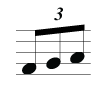
A tuplet element is present when a tuplet is to be displayed graphically, in addition to the sound data provided by the time-modification elements. The number attribute is used to distinguish nested tuplets. The bracket attribute is used to indicate the presence of a bracket. If unspecified, the results are implementation-dependent. The line-shape attribute is used to specify whether the bracket is straight or in the older curved or slurred style. It is straight by default.
Whereas a time-modification element shows how the cumulative, sounding effect of tuplets and double-note tremolos compare to the written note type, the tuplet element describes how this is displayed. The tuplet element also provides more detailed representation information than the time-modification element, and is needed to represent nested tuplets and other complex tuplets accurately.
The show-number attribute is used to display either the number of actual notes, the number of both actual and normal notes, or neither. It is actual by default. The show-type attribute is used to display either the actual type, both the actual and normal types, or neither. It is none by default.
|
| tuplet-actual |
The tuplet-actual element provides optional full control over how the actual part of the tuplet is displayed, including number and note type (with dots). If any of these elements are absent, their values are based on the time-modification element.
|
| tuplet-dot |
The tuplet-dot type is used to specify dotted normal tuplet types.
|
| tuplet-normal |
The tuplet-normal element provides optional full control over how the normal part of the tuplet is displayed, including number and note type (with dots). If any of these elements are absent, their values are based on the time-modification element.
|
| tuplet-number |
The tuplet-number type indicates the number of notes for this portion of the tuplet.
|
| tuplet-type |
The tuplet-type type indicates the graphical note type of the notes for this portion of the tuplet.
|
| turn |
The turn element is the normal turn shape which goes up then down.
|
| type |
Type indicates the graphic note type, Valid values (from shortest to longest) are 1024th, 512th, 256th, 128th, 64th, 32nd, 16th, eighth, quarter, half, whole, breve, long, and maxima. The size attribute indicates full, cue, or large size, with full the default for regular notes and cue the default for cue and grace notes.
|
| unpitched |
The unpitched type represents musical elements that are notated on the staff but lack definite pitch, such as unpitched percussion and speaking voice.
|
| unstress |
The unstress element indicates an unstressed note. It is often notated using a u-shaped symbol.
|
| up-bow |
The up-bow element represents the symbol that is used both for up-bowing on bowed instruments, and up-stroke on plucked instruments.
|
| vertical-turn |
The vertical-turn element has the turn symbol shape arranged vertically going from upper left to lower right.
|
| virtual-instrument |
The virtual-instrument element defines a specific virtual instrument used for an instrument sound.
|
| virtual-library |
The virtual-library element indicates the virtual instrument library name.
|
| virtual-name |
The virtual-name element indicates the library-specific name for the virtual instrument.
|
| voice |
A voice is a sequence of musical events (e.g. notes, chords, rests) that proceeds linearly in time. The voice element is used to distinguish between multiple voices (what MuseData calls tracks) in individual parts. It is defined within a group due to its multiple uses within the MusicXML schema.
|
| volume |
The volume element value is a percentage of the maximum ranging from 0 to 100, with decimal values allowed. This corresponds to a scaling value for the MIDI 1.0 channel volume controller.
|
| wavy-line |
Wavy lines are one way to indicate trills. When used with a measure element, they should always have type="continue" set.
|
| wavy-line |
Wavy lines are one way to indicate trills. When used with a measure element, they should always have type="continue" set.
|
| wedge |
The wedge type represents crescendo and diminuendo wedge symbols. The type attribute is crescendo for the start of a wedge that is closed at the left side, and diminuendo for the start of a wedge that is closed on the right side. Spread values are measured in tenths; those at the start of a crescendo wedge or end of a diminuendo wedge are ignored. The niente attribute is yes if a circle appears at the point of the wedge, indicating a crescendo from nothing or diminuendo to nothing. It is no by default, and used only when the type is crescendo, or the type is stop for a wedge that began with a diminuendo type. The line-type is solid by default.
|
| with-bar |
The with-bar element indicates that the bend is to be done at the bridge with a whammy or vibrato bar. The content of the element indicates how this should be notated.
|
| wood |
The wood type represents pictograms for wood percussion instruments. The maraca and maracas values distinguish the one- and two-maraca versions of the pictogram. The vibraslap and castanets values are in addition to Stone's list.
|
| word-font |
|
| words |
The words element specifies a standard text direction. Left justification is assumed if not specified. Language is Italian ("it") by default. Enclosure is none by default.
|
| work |
Works are optionally identified by number and title. The work type also may indicate a link to the opus document that composes multiple scores into a collection.
|
| work-number |
The work-number element specifies the number of a work, such as its opus number.
|
| work-title |
The work-title element specifies the title of a work, not including its opus or other work number.
|















































